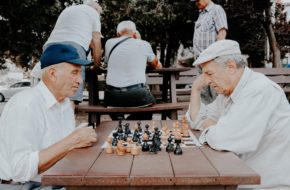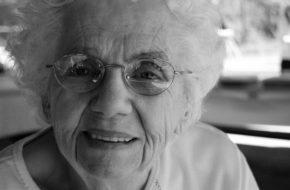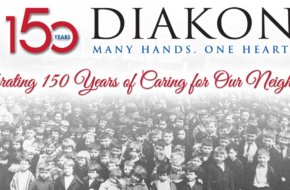Someone recently asked me about the importance of various roles within a senior living community.
My immediate response arose from my knowledge of 1 Corinthians: “Just as a body, though one, has many parts … all its many parts form one body … there should be no division in the body, but … its parts should have equal concern for each other. If one part suffers, every part suffers with it; if one part is honored, every part rejoices with it.”
In other words, every role is equally important, every staff member critical to the quality service we provide.
The question dovetailed so nicely with our new customer service program at Diakon—Many Hands. One Heart. Service Excellence.—I felt compelled to write about it. One part of that program guides staff members toward the understanding that, no matter what our role is, we are all equally important to our mission. We cannot accomplish our goals any other way!
Naki Godfrey, a regional sales and marketing director for Diakon and coordinator of our customer service program, wrote this introduction for the program, which so well encapsulates our team focus:
“At Diakon, we touch the lives of our residents, clients, customers, family members, vendors and staff every day. Why? Simply put: We are in the business of providing service and care. That’s what we do at Diakon, no matter which service line you are involved in.
“Many Hands, providing excellent care, motivated by the One Heart of compassion, is one way we describe what all of us do each day as the “many hands” of Diakon.
“Although Diakon has always been a customer-focused organization, our goal in designing the Many Hands. One Heart. Service Excellence. program was to:
• Help us to see exemplary customer service in new and helpful ways.
• Provide reminders and tips on how always to focus on our customers—our residents and clients—first.
• Incorporate a customer service focus into everything we do.
“Even the most customer-focused organizations—including Diakon—must re-emphasize a customer-centric approach in everything they do as health care and related fields continue to change and grow. Our outcomes on customer service are more important than ever.
“So … is customer service new to Diakon? Absolutely not. It has always been at the root of our culture and organization.”
But reminders of that focus remain especially important today. As is the recognition of how important every staff member is to our goal of excellent care and service.
—Jennifer Sharp, BSW, NHA, PCHA
Vice President, Operations
Diakon Senior Living Services
Because we review comments, they do not appear immediately. Please do not submit each comment more than once. Please review our comment policy.













